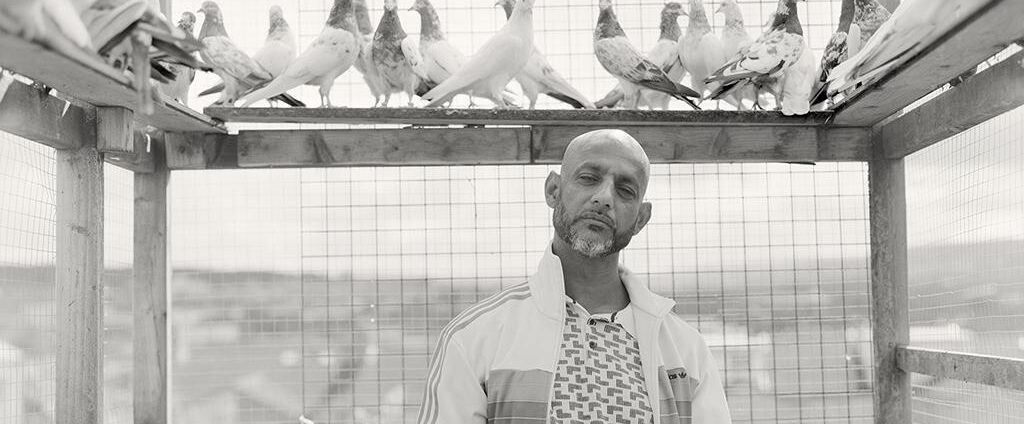The 2023 Arnold Newman Prize Winner, Finalists, Honorable Mentions and Jurors
Congratulations to our 2023 Arnold Newman Prize winner and finalists! We’d also like to thank our jurors and all of those who submitted their work for this competition. You can also see more of our past and current prize winners and learn more about the Arnold Newman Prize.
This year’s ANP winner, Lisa Elmaleh spoke at our Alumni Lecture Series on December 7th. A video recording of this lecture about her journey with a camera, a truck and a pair of worn out shoes can be viewed here.
Lisa is also teaching an online workshop 'The Story in Your Photographs' for photographers wanting to build a body of work or advance an existing photographic portfolio.
Winner:
Finalists:
Honorable Mentions:
Craig Easton – “BANK TOP”
BANK TOP is a collaboration with writer, poet & social researcher Abdul Aziz Hafiz, examining the representation & misrepresentation of immigrant and working-class communities in the north of England by focusing on a single tight knit neighbourhood wedged between two streets of Victorian terraces in Blackburn, Lancashire.
Blackburn – once the centre of the industrial revolution and the driver of much of Britain’s early wealth generation – has become synonymous with the use of words like ‘segregation’ (BBC Panorama described it as ‘the most segregated town in Britain’) & ‘integration’ (The Casey Review to the UK government) by the media & policy makers. These callous terms are used deliberately and simplistically to explain the challenges faced by such neighbourhoods & towns, avoiding the socio-political backstory that lead to deprivation and division.
The work aims to challenge attempts by the media to dominate discourses from afar, avoiding and ignoring the historical legacy & social costs of industrial expansion and the cruelty of colonial exploitation, which in the north of England has shaped the path of development in the past and continues to do so today.
Like much of my work, Bank Top aims to personalise and challenge these sweeping narratives, whilst setting those personal experiences clearly within the context of government policy and media representation.
I spent 18 months making work in Bank Top, talking to residents and examining the media representation of their community.
The portraits, all made on large format 10×8 film, present a new narrative that sets the experience of this community not in terms of ‘segregation’ but rather as evidence of ‘congregation’ where people from all over the world have come to Bank Top to live together in a thriving multi-ethnic, multi-faith, multinational community.
In the wider project the large format portraits, presented alongside images of industrial archaeology, reveal the control and responsibility of the state for its role in the colonialist project and the subsequent and recurring policy failures that conceal this history.
This long-form collaboration brings together photography, deep historical research, critical writing and poetry to challenge the controlling narrative by using the stories and experiences in Bank Top to address wider, more universal issues around social deprivation, housing, unemployment, immigration, representation as well as the impacts and legacy of contemporary and colonial foreign policy.
Prints are presented as large framed images 54”x44” designed to challenge and upset the usual viewer/viewed relationship. The people I photograph are ordinary people, not often seen in national galleries of the ‘great and the good’ where large portraits hang high above you commanding your respect. I want my work to sit alongside those portraits, my aim is to demand that same respect for working people, those more used to being talked about than listened to.
– Craig Easton
About the artist
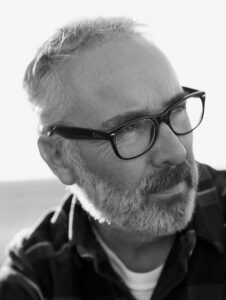 Craig Easton’s work is deeply rooted in the documentary tradition. He shoots long-term documentary projects exploring issues around social policy, identity, culture and community. Known for his intimate portraits and expansive landscape, his work regularly combines these elements with reportage approaches to storytelling, often working collaboratively with others to incorporate words, pictures and audio in a research-based practice that weaves a narrative between contemporary experience and history.
Craig Easton’s work is deeply rooted in the documentary tradition. He shoots long-term documentary projects exploring issues around social policy, identity, culture and community. Known for his intimate portraits and expansive landscape, his work regularly combines these elements with reportage approaches to storytelling, often working collaboratively with others to incorporate words, pictures and audio in a research-based practice that weaves a narrative between contemporary experience and history.
In 2021, Easton was awarded the prestigious title of Photographer of the Year at the SONY World Photography Awards and in 2022 was recognised with an Honorary Fellowship of the Royal Photographic Society.
He has published three monographs – Thatcher’s Children, GOST Books, 2023; Bank Top, GOST Books, 2022 and Fisherwomen, Ten O’Clock Books, 2020.
A passionate believer in working collaboratively with others, Easton conceived and led the critically acclaimed SIXTEEN project with sixteen leading photographers exploring the hopes, ambitions and fears of sixteen-year-olds all around the UK. This Arts Council funded project was exhibited in over 20 exhibitions throughout 2019/2020 culminating in three simultaneous shows in London.
Easton is a regular visiting lecturer at universities and runs workshops both in the UK and internationally.
His prints are widely collected by private individuals & corporations and are held in important museum collections and archives including the FC Barcelona collection, the St. Andrews University Special Collections, Hull Maritime Museum and Salford University Art Collection.
In addition to his personal documentary and art projects, he continues to shoot for editorial & advertising clients worldwide. Advertising and commercial clients include: The National Health Service, Visit Britain, Land Rover, Heathrow Airport, Wagamama, Mazda, John Lewis etc.
Dylan Hausthor – “What the Rain Might Bring”
I recently visited my hometown and stopped to fill my car with gas. I noticed a woman sitting outside the gas station drinking coffee and recognized her as my old ballet teacher. I sat down next to her and we caught up. She had been going blind for a decade since I last saw her. She had fallen out of love, started growing a garden, and found god. She had a small collection of freshly picked mushrooms next to her and handed me one, saying “Mushrooms have no gender, did you know that?”
Named after David Arora’s mushroom identification guide, What The Rain Might Bring is a cross-disciplinary project that explores the complexities of storytelling, faith, folklore, and the inherent queerness of the natural world.
Small-town gossip, relationships to the land, the mysteries of wildlife, the drama of humanity, and the unpredictability of human spectacle inspire the stories in these images and installations. I’m fascinated by the instability of storytelling and hope to enable character and landscape to act as gossip in their own right: cross-pollinating and synthesizing. Cultural systems, communities bound by belief, ruralism, the ghosts that haunt landscapes, and the disentangling of colonial narratives drive these installations, images, and videos.
The often disregarded underbelly of a post-fact world seems to be the simultaneous beauty and danger of fiction. I’m interested in photography as a medium of hybridity and nuance—weavings of myth filled with tangents and nuances, treading the lines between investigative journalism, disinformation, performance, acts of obsession, and self-conscious manipulation. Photography’s ability to promote belief is a power not dissimilar to that of faith. By using modes of making that are traditionally linked to fact-finding, I hope for the viewers and readers of my work to find themselves in a space between fiction and reality—to push past questions of validity that form the base tradition of colonialism in storytelling and folklore and into a much more human sense of reality: faulted, broken, and real.
– Dylan Hausthor
About the artist
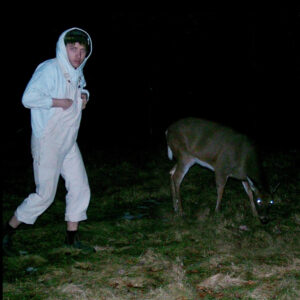 Dylan Hausthor is an artist based on the coast of Maine. They received their BFA from Maine College of Art and MFA from Yale School of Art. They were a 2019 recipient of a Nancy Graves fellowship for visual artists, runner-up for the Aperture Portfolio Prize, nominated for Prix Pictet 2021, a W. Eugene Smith Grant finalist, 2021 Hariban Award Honorable Mention, 2021 Penumbra Foundation resident, 2023 Light Work resident, and the winner of Burn Magazine’s Emerging Photographer’s Fund. Their work has been shown nationally and internationally, and they have three books in the permanent collection at MoMA. They are currently a 2022-2023 Lunder Fellow at Colby College. They work teaching ghost hunting, ritual, photography, and mushroom foraging. To write this biography, Dylan contacted a forensic medium, who suggested that they “seemed like someone who was passionate in the things they believed in and who hides messages in what they have to say”.
Dylan Hausthor is an artist based on the coast of Maine. They received their BFA from Maine College of Art and MFA from Yale School of Art. They were a 2019 recipient of a Nancy Graves fellowship for visual artists, runner-up for the Aperture Portfolio Prize, nominated for Prix Pictet 2021, a W. Eugene Smith Grant finalist, 2021 Hariban Award Honorable Mention, 2021 Penumbra Foundation resident, 2023 Light Work resident, and the winner of Burn Magazine’s Emerging Photographer’s Fund. Their work has been shown nationally and internationally, and they have three books in the permanent collection at MoMA. They are currently a 2022-2023 Lunder Fellow at Colby College. They work teaching ghost hunting, ritual, photography, and mushroom foraging. To write this biography, Dylan contacted a forensic medium, who suggested that they “seemed like someone who was passionate in the things they believed in and who hides messages in what they have to say”.
Takako Kido – “Skinship”
Skinship is a Japanese term that describes the skin-to-skin, heart-to-heart relationship between mother and child, or other family members. This includes breastfeeding, cuddling, piggyback rides, co-bathing, co-sleeping, even playing, anything which builds intimacy. Through an experience of loving touch, a child learns to care for others. Skinship is considered to be important for a child’s healthy development and the strengthening of family bonds. It will be less visible forms until they reach puberty.
While skinship is widely recognized in Japan, what many are unaware of is that it doesn’t originate from English culture, but rather has its roots in Japanese culture.
During a World Health Organization seminar in 1953, discussing maternal deprivation, an American teacher introduced the word “skinship” to highlight the crucial role of physical closeness in nurturing children’s mental well-being especially for working mother. Dr. Nobuyoshi Hirai, a pediatrician and developmental psychologist in attendance, unintentionally associated skinship with an American parenting style, leading to the misconception that it originated from English. At the time, he wasn’t concerned about Japanese children, as traditional Japanese parenting practices originally valued physical closeness. However, with the arrival of post-war westernization, these practices gradually lost popularity. In the 1970s, as deterioration in mother-child relationships and the rise of mental illness in children became evident, Dr. Hirai and others introduced the concept of “skinship” as a means to restore intimate communication within families. Eventually the term became the Japanese language.
The concept of skinship felt completely natural to me. It was only after I was arrested in New York for my family’s snapshots of skinship, that I realized how unique and potentially shocking it could be in other cultural contexts.
Since then, I had carried unfamiliar discomfort within me. Though I didn’t know why, I discarded all my dresses and lingerie that could possibly be perceived as provocative.
After the arrest, I was deported from America. This incident made me acknowledge my Japanese identity more deeply. Living in both Japan and America, showed me a clear comparison and paradox.
In 1876, Emile Guimet, a French entrepreneur, visited Japan and witnessed the widespread mixed-gender bathing in public bathhouses. In his book, “Promenades Japonaises,” he wrote:
“We were dealing with Eve before the sin, unaware of impropriety, ignorant of what is shocking; and now, the curious gazes of gentlemen, the startled cries of ladies reveal an unknown sin. I declare it, shame is a vice. The Japanese did not have it; we gave it to them.”
Due to complaints from foreigners, the Meiji government prohibited mixed bathing in public bathhouses and public nudity. However, Japanese continued co-bathing at home. We still have the practice of “Hadaka-no-tsukiai” (naked association), like visiting hot springs with family, friends or colleagues to nurture stronger bonds.
Back in Japan, I gave birth to my son in 2012. There was no boundaries between our bodies; a symbiotic union. It was a feeling of oneness that I never experienced with another person. While breastfeeding, when my son looked at me, it felt as if I were being observed by myself. The act of nourishing a human being from my own body and watching him grow, was an experience that awakened a primal power within me as a mother. I breastfed him whenever and wherever necessary, without any embarrassment of exposing my breasts to others. As I fiercely protected and nurtured my child, all feelings of shame and ego were washed away.
Motherhood liberated me from constraints; the sense of shame for my body and the hypersexualization of the female body. Photographing my son growing up and enjoying skinship enabled healing my old wound.
– Takako Kido
About the artist
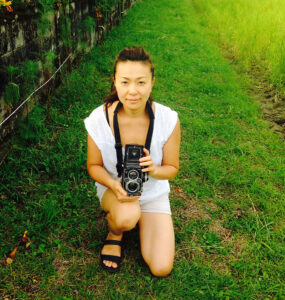 Born in Kochi, Japan in 1970. She received a B.A. in Economics from Soka University in Tokyo in 1993. After graduating from the International Center of Photography’s full-time General Studies program in 2003, she remained in New York working as a black and white printer and retoucher while also exhibiting and publishing her own work. She returned to Japan in 2008 and currently lives in Kochi Prefecture. She presents her work in solo and group exhibitions both in Japan and internationally. Kido has published a photography book, “The Unseen” in 2021.
Born in Kochi, Japan in 1970. She received a B.A. in Economics from Soka University in Tokyo in 1993. After graduating from the International Center of Photography’s full-time General Studies program in 2003, she remained in New York working as a black and white printer and retoucher while also exhibiting and publishing her own work. She returned to Japan in 2008 and currently lives in Kochi Prefecture. She presents her work in solo and group exhibitions both in Japan and internationally. Kido has published a photography book, “The Unseen” in 2021.
Nzingah Oyo – “Of 30 Siblings”
Every family is particular in some way, but 1390 was wondrous! The Oyo family was the unique bunch on the block. We were Africa in the streets of Brooklyn. We stood out not only by our clothing and religion, but we were our village, and for some reason, people were attracted to us and what we stood for. A community-centered family of entrepreneurs, educators, and artists.
I grew up in a large polygamous family in Brooklyn with 30 siblings, several mothers, and one father.
My Islamic and traditional African upbringing blended into the contemporary American society that surrounded us, causing me to reconstruct the cultural traditions I chose to retain from my past.
Of 30 Siblings celebrates the Oyo family through my lens. I began photographing us, just a year after entering College at 17. While learning the various formats and styles of the medium, I thought of ways to depict my story as it wasn’t commonly seen through a subjective lens. This became of greater interest as I learned about other artists and their approach to the medium. I became interested in depicting the contrast between African and Islamic clothing in the context of our urban environments. My father’s love for Africa lives in us all and somehow reveals throughout the compositions of each portrait. The series depicts the essence of Black Brooklyn and the rich merging of culture and family. Visitors from various countries and walks of life patronized my family’s businesses and community events (Merchants of Oyo, African Islamic Mission, Aim Cyber Lounge, Family Day Picnic, etc.). We were about building the community, yet the community that lived within us all was most intriguing.
Our eyes tell stories from our pasts and hopes for our future. Like the silkscreen patterned fabrics my father pressed in the backyard during the summer, patterns are woven together, creating layers of stories as the family grows more prominent. Each sibling naturally forms the narrative, and depictions of happiness, struggle, peace, grief, & birth often exist within these photographs. A metamorphosis of ideas moving from youth into adulthood can be seen. Silent dialogue is captured through space where a mother gracefully touches her son’s foot or two cousins bonding on a sofa Sunday afternoon.
I want to capture the beauty of us all and have been shooting with a 4×5 view camera because much care is placed on the siblings in their environment. The clarity, detail, and time it takes to make the portraits become an artistic experience that tells our history. While the process of documenting them is the focus, the conversations that arise while I am behind the lens is as equally important for this body of work. They are as familiar with my story and journey, slowly watching me age behind the “large old fashion camera.” I am always amazed by the sentiment(s) captured during each subject’s stillness.
– Nzingah Oyo
About the artist
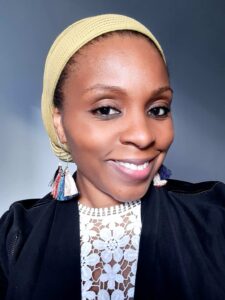 Nzingah Oyo is an American-born, Brooklyn-based visual artist, photographer, and curator. For over two decades, she has created images that celebrate and examine cultural tensions/blends of Islam, American and African cultures. She received an MFA in Photography from Temple University and a BFA from SUNY Purchase. She has taught photography at Temple University and held the role of Visiting Assistant Professor at the University of South Florida. She is a Fulbright scholar and a recipient of the Light Work Artist in Residence program. Oyo has received several Brooklyn Arts Council grants, the Lilly Auchincloss Foundation Award of Excellence in Photography, The Urban Arts Initiative grant in Photography, and awarded a New York Foundation of Arts grant in Photography. She was recently selected for the New York Times Photo Review 2023. Her work has been exhibited in both solo and group shows internationally and nationally. Oyo is currently a freelance photographer, adjunct faculty at The School of Visual Arts, and teaching artist for the Brooklyn Arts Council.
Nzingah Oyo is an American-born, Brooklyn-based visual artist, photographer, and curator. For over two decades, she has created images that celebrate and examine cultural tensions/blends of Islam, American and African cultures. She received an MFA in Photography from Temple University and a BFA from SUNY Purchase. She has taught photography at Temple University and held the role of Visiting Assistant Professor at the University of South Florida. She is a Fulbright scholar and a recipient of the Light Work Artist in Residence program. Oyo has received several Brooklyn Arts Council grants, the Lilly Auchincloss Foundation Award of Excellence in Photography, The Urban Arts Initiative grant in Photography, and awarded a New York Foundation of Arts grant in Photography. She was recently selected for the New York Times Photo Review 2023. Her work has been exhibited in both solo and group shows internationally and nationally. Oyo is currently a freelance photographer, adjunct faculty at The School of Visual Arts, and teaching artist for the Brooklyn Arts Council.
“I believe everyone has a vision; some are simple creations of beautiful ideas, while others depict layers and complexities of our shared human experience.”
Matt Eich – “Bird Song Over Black Water”
The song contained many songs. . .
Help me to lie low and leave out, Remind me that vision is singular, that excess Is regress, that more than enough is too much, that compression is all
from Meditation on Song and Structure
by Charles Wright
Bird Song Over Black Water is an ongoing body of work made in my home state of Virginia that will span a decade when complete. The series incorporates portraiture, still lives, and landscapes, but at the emotional core of the work is my desire to share small intimacies with people. While photography is limited to light on surface, I am interested in what lies below the surface of an individual and strive to make images that evoke a psychological space. To achieve this, I often work in a collaborative manner, engaging with individuals to visually represent themselves as they wish to be seen.
The way I make work is largely intuitive. My subconscious only a few steps ahead of my conscious mind on a path to the questions I seek. I trust the images to guide me toward a clear vision one-to-the-next. While my faith in the photographic medium is frequently tested, I still believe it can expand our capacity for empathy. Belief alone rescues me from despair.
Depicting those I encounter with intimacy and respect, I consider the weight of our troubled colonialist past, and how it has led to the isolation and division of the present, while trying to illuminate our collective hopes for the future. The encounters I have, and the resulting images, reflect my own search for moments of human connection, and desire to extend this moment of communion.
– Matt Eich
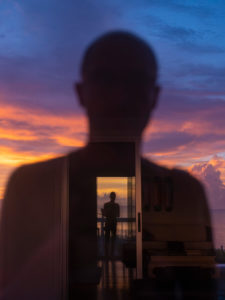 Matt Eich is a photographic essayist working on long-form projects related to memory, family, community, and the American condition. He is the author of four monographs of photography and his work is widely exhibited and held in numerous public collections. Matt’s projects have received support from an Aaron Siskind Fellowship, two Getty Images Grants, a VMFA Professional Fellowship and an Aperture/Google Creators Lab Photo Fund Grant. He was an artist in residence at Light Work in 2013 and at a Robert Rauschenberg Residency in 2019. Eich is an Assistant Professor at the George Washington University, lives in Virginia and makes books under the imprint Little Oak.PRESS.
Matt Eich is a photographic essayist working on long-form projects related to memory, family, community, and the American condition. He is the author of four monographs of photography and his work is widely exhibited and held in numerous public collections. Matt’s projects have received support from an Aaron Siskind Fellowship, two Getty Images Grants, a VMFA Professional Fellowship and an Aperture/Google Creators Lab Photo Fund Grant. He was an artist in residence at Light Work in 2013 and at a Robert Rauschenberg Residency in 2019. Eich is an Assistant Professor at the George Washington University, lives in Virginia and makes books under the imprint Little Oak.PRESS.
Sarah Mei Herman – “Solace”
In response to my long-term Touch series, I was approached by Emerson & Wajdowicz Studios (EWS) to produce a related project about the LGBTQ+ community in China. Specializing in socially-conscious multimedia design and art, EWS runs a photobook series devoted entirely to LGBTQ+ themed stories – showcasing the diversity and complexity of queer communities around the world.
In September 2019, I returned to Xiamen to portray 14 queer individuals and couples, all of whom I found through my existing network in the city. Alongside portraits of each person, and images of the private spaces they inhabit, Solace features interviews with each subject about life, love and their personal fears. Unable to return to Xiamen during the pandemic, I continued the project in the Netherlands, photographing young members of China’s LGBTQ+ community who had relocated to Europe. The book was published by New York’s The New Press in December 2022.
– Sarah Mei Herman
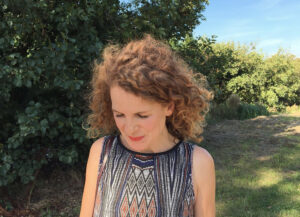
Sarah Mei Herman (b. 1980, NL) holds a BA in Photography from The Royal Academy of Art, The Hague, and an MA in Fine Art Photography from London’s Royal College of Art.
Herman’s work has been exhibited internationally, at institutions and festivals such as The National Portrait Gallery, London; The Benaki Museum, Athens; Photo Elysée, Lausanne; Le Château d’Eau, Toulouse; The Jewish History Museum, Amsterdam; and the JIMEI x ARLES International Photo Festival, Xiamen. Her projects have been recognised by a range of prizes and awards, including the Taylor Wessing Portrait Prize, the Hyères Festival of Fashion and Photography, and the V&A Parasol Women in Photography Prize. Her work is found in several public and private art collections, whilst her images have been published by the likes of iD, Vogue Italia, Foam Magazine, Paper Journal and Dear Dave. In 2024, Herman’s second photo book – Julian & Jonathan – will be published by the London-based GOST Books.
Throughout her practice, Herman explores relationships, loneliness, longing, intimacy and the human urge for physical proximity. Probing gently at the things that bridge and divide her subjects, her projects pay close attention to the vulnerability of transitory life stages – from the trials and fleeting beauty of adolescence to the grey areas between friendship and romance. At times, Herman’s position is that of a relative outsider: she comes to know her subjects through the act of portraying them. Elsewhere, Herman’s placement is closer to the story, training her lens – for instance – on the complex dynamics of her own family.
The notion of time is of equal importance to Herman’s work; photographing the same subjects over many years, she charts fluid cycles of transition and evolution, as well as what remains unchanged and unmoving. The approach reflects the artist’s own preoccupation with the passage of time – or the fear of what’s lost in the process. Immersed in image-making, time feels slowed down or even briefly suspended, turning up a chance to crystallise both a moment and a memory.
Lee-Ann Olwage – “The Right to Play”
What do girls dream of? And what happens when a supportive environment is created where girls are empowered and given the opportunity to learn and dream? The Right To Play creates a playful world where girls are shown in an empowered and affirming way.
Every day, girls face barriers to education caused by poverty, cultural norms, and practices, poor infrastructure and violence. For this project, I’m working with school girls to show what the world could look like when girls are given the opportunity to continue learning in an environment that supports them and their dreams.
Worldwide, 129 million girls are out of school and only 49 percent of countries have achieved gender parity in primary education with the gap widening at secondary school level. From a young age, many girls are told what their future will look like. The expectation is: you grow up, you get a husband and you have children. And that’s your life.
For this project, I worked with the girls from Kakenya’s Dream, a nonprofit organisation that leverages education to empower girls, end harmful traditional practices including female genital mutilation (FGM) and child marriage, and transform communities in rural Kenya. Their goal is to invest in girls from rural communities through educational, health, and leadership initiatives to create agents of change and to create a world where African women and girls are valued and respected as leaders and equal in every way.
By using flowers to create a playful world where girls are shown exuding pride and joy I aim to re-imagine the narrative of child marriage and in collaboration with the girls to reclaim their futures and dreams.
– Lee-Ann Olwage
“Photography is the hardest mirror I’ve held up to myself. Your work is a reflection of your state of mind and reveals that to the world. That kind of honest self-observation takes a lot of courage. It takes a long time to peel back the layers of yourself and to show that to the world.”
Lee-Ann Olwage is a visual storyteller and photographic artist from South Africa. Her work is all about identity, collaboration, and celebration. She is interested in using the medium of photography as a mode of co-creation and celebration. With her long-term projects, she aims to create a space where people she collaborates with can play an active part in the creation of images they feel tell their stories in a way that is affirming and celebratory.
Angelika Kollin – “Mary’s Children”
My entire focus in my artistic practice revolves around exploring the essence of humanity, with a particular emphasis on womanhood. The human experience can be incredibly isolating on this expansive planet without functional inter-human connections or a life driven by profound passion. Ultimately, we all seek love, a sense of belonging, and a purposeful existence.
My new project (2023-), “Mary’s Children,” pays homage to individuals who demonstrate unwavering strength and courage in the face of tragic events and challenging life circumstances. The name carries importance, as it symbolizes the genuine heroes and heroines (Everyday Saints) whom I find truly deserving of admiration amidst a world consumed by the pursuit of fame and wealth.
In a society where celebrities and the affluent often take center stage, these remarkable individuals embody the true essence of heroism and strength. They radiate a light of the Spirit and possess a remarkable strength of Faith, demonstrating courage and openness of heart that surpasses that of many self-proclaimed spiritual leaders and gurus. Unfortunately, their stories often remain untold, overshadowed by the noise of mainstream media.
I want to bring attention and visibility to these extraordinary human beings. The inspiring journey with “Mary’s Children” serves as a confirmation of the boundless capacity for growth and courage within each of us.
– Angelika Kollin
Angelika Kollin (b. 1976) is an Estonian Fine Art/Documentary photographer currently residing in Tampa, USA. She is self-taught and engages with her passion for photography and art as a tool of exploration of interhuman connections and intimacy. The direction of her work is driven by the lifelong yearning to understand and gain a deeper perspective on human loneliness and suffering, as well as the role faith plays in overcoming it. Angelika’s work’s honesty and unapologetic directness is caringly softened by the aura of intimate emotions and gracious dignity. She has spent eight years living in African countries (Ghana, Namibia, and South Africa), where she explored the same topics in various cultures and economic conditions. It strengthened her belief that despite many circumstances in life, the one thing that shapes us the most is our relationship with our parents. Through intense artistic evolution, she has arrived at her current and ongoing projects – You Are My Mother/Father and the Song of Psalms.
Angelika’s work has been recognized by Lensculture (1 prize winner, 2020/finalist, 2022), BIFA (1st Place, 2021), Lucie Foundation (finalist, 2020), and PHMuseum (finalist, 2020), among others. Her work has been exhibited at Helsinki Foto festival, Lensculture group exhibition in New York, Cape Town (solo), OFF Foto Festival in Bratislava, FotoNostrum gallery in Barcelona, and The International Photographer group exhibition in Berlin.
Irina Werning – “Las Pelilargas”
Women in South America wear their hair longer than in most Western countries due to its hybrid culture and influence of Indigenous traditions. In most indigenous communities the cutting of hair represents cutting their thoughts.
Since 2006 I have been searching and photographing women with long hair in Argentina. A leader of the Kolla community once told me: “Your hair is important; that’s your connection to the land. it’s the teaching that’s been passed down from generation to generation”.
As a woman from south America I sometimes struggle with the idea of having to adopt masculine traits to be successful or equal to men, a notion at the very core of machisimo. Gender equality can also be promoted by telling stories that highlight femininity and aspects that unite women in their communities.
I hope that my pictures celebrate this ancestral tradition that connects us to our land, and also honor the beauty and power of womanhood.
– Irina Werning
Irina Werning is a freelance photojournalist who focuses on personal long-term projects. She is based in Buenos Aires, Argentina.
Werning has a bachelor’s degree in economics, a master’s degree in history (Buenos Aires), and a master’s in photojournalism (London).
She won the Ian Parry Scholarship (The Sunday Times Magazine and Getty) in 2006, the Emerging Photographer Fund—Burn Magazine (Magnum Foundation) grant in 2012, and she took first place in the Sony World Photography Awards, in the portraiture category, in 2012.
Werning was chosen by TIME magazine as one Nine Argentinian Photographers You Need To Follow in 2015, and her book Back to the Future was chosen by TIME as one of the best photobooks of 2014.
In 2020, she was awarded the Emergency Covid Grant (National Geographic) and a Pulitzer Center Reporting Grant in 2021. She won the World Press Photo competition in 2022 in the Story, South America, category.
Kiana Hayeri – “Loss Piles on Loss for Afghan Women”
Walk around the capital, Kabul, and it often feels as if women have been airbrushed out of the city. There are fewer women on the streets these days than even a few months ago. More and more, those who still venture out — once in jeans and long blouses — are covered head-to-toe in concealing robes, their faces obscured behind masks. Female shop mannequins have been beheaded or their heads wrapped in tinfoil. Photos of bridal models outside of the beauty salons are spray painted. But the most profound change is invisible: It is the storm of loss, grief and rage that has enveloped the city’s women, they say.
Some women went into hiding, fearing retribution after the Taliban seized power. Others began protesting on the street. Grandmothers in dusty villages walked out of their mud brick homes with relief, free for the first time in 40 years of the fear of stray bullets or airstrikes raining down. Some teenage girls began attending schools in secret, echoing the stories from their mothers’ childhoods that once felt like grim folklore.
For the longest time, I have been so distraught by weaponizing women’s rights in Afghanistan that I can not help but to wonder how has the West actually improved the lives of Afghan women? Conversely, how has it impoverished them? What actions have Afghan women themselves taken to resist their oppression? And what hope is there for their future?
When the Taliban returned to power in Afghanistan in August 2021, women were among the most profoundly affected. While the end of fighting offered a welcome respite, particularly for women in rural areas, others’ lives have been severely constricted. Many watched 20 years of gains made under Western occupation unravel as the new government issued edict after edict scrubbing women from public life. While, evidently the Islamic Emirates has been trying to eliminate women from society and shutting down their voices, over several months last year, I spoke to 96 women across the country and from all walks of life to understand how their lives and Afghan society have changed since Taliban came back into power. The result was turned into an interactive piece for The New York Times.
Today, Afghanistan is among the most restrictive countries in the world for women, according to human rights monitors. Girls are barred from secondary schools. Women are prohibited from traveling any significant distance without a male relative, and from going to public spaces like public baths, gyms and parks. Women are banned from attending universities and from working for aid organizations, some of the last hopes left for professional or public lives. In the most recent move, Ministry of Vice and Virtue have ordered all beauty salons in the country to close up shop before the end of the month, putting an estimated 60,000 women out of jobs.
The tone of the portraits was set to resemble the confined spaces that women are bounded to, like “an encaged bird”; a metaphor that many of the women I interviewed used to describe how their frustration, rage and sadness. All of the portraits are set up in the comfort of their personal spaces and naturally lit with a warm light, often through the sun on the verge of setting. The lighting symbolizes the beam of hope the women once had and now is disappearing fast. Every one of the women who agreed to be photographed for this project is incredibly audacious and courageous. They wanted to be heard. Let us not forget them; remember their faces, their names and their stories.
– Kiana Hayeri
Kiana (b.1988) is a Senior TED fellow and a regular contributor to The New York Times. Her work has appeared in Harper’s Magazine, Foreign Policy, Washington Post, NPR, Monocle Magazine, Wall Street Journal, Le Monde, The Globe and Mail, among others.
Follow her on Instagram (@kianahayeri) where she shares bits and pieces of daily life as she travels, explores and tells stories. Kiana is based in Kabul, Afghanistan, covering the region.
Sarah Leen
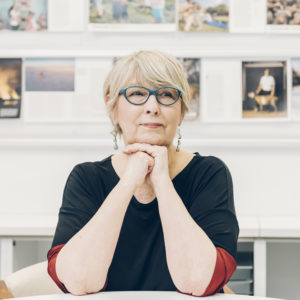
In 2013 Sarah Leen became the first female Director of Photography at National Geographic Partners. In late 2019 she founded the Visual Thinking Collective, a community for independent women photo editors, creative directors, teachers and curators dedicated to visual storytelling.
For nearly 20 years she worked as a freelance photographer for the National Geographic magazine until 2004 when she joined the staff as a Senior Photo Editor.
Leen currently works with individual photographers and agencies consulting and editing projects and books including the America, Again project by the VII Photo, the 2020 FotoEvidence and World Press Photo Book Award winner HABIBI by Antonio Faccilongo and Anders Wo by Petra Barth.
Caleb Cain Marcus
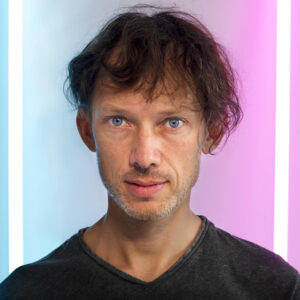 Caleb Cain Marcus is head of Brooklyn based design studio Luminosity Lab, known for developing the creative strategy, and leading the design of publications for museums, galleries, publishers, and artists.
Caleb Cain Marcus is head of Brooklyn based design studio Luminosity Lab, known for developing the creative strategy, and leading the design of publications for museums, galleries, publishers, and artists.
He has a passion for building meaningful concepts through strong ideas, typography, design and collaboration.
Cain Marcus’ work has been recognized by the Art Directors Club, AIGA and Tokyo Type Directors Club.
He received his MFA from Columbia University and has work in the collections of the Getty and Metropolitan Museum of Art.
Lisa Elmaleh
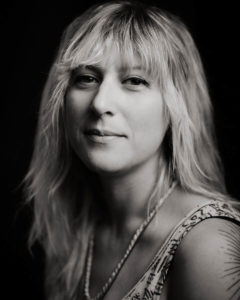 Lisa Elmaleh is an American visual artist, educator, and documentarian based in Hampshire County, West Virginia. She specializes in large-format work in tintype, glass negative, and celluloid film. Since 2007, she has been traveling across the US documenting American landscapes, life, and culture.
Lisa Elmaleh is an American visual artist, educator, and documentarian based in Hampshire County, West Virginia. She specializes in large-format work in tintype, glass negative, and celluloid film. Since 2007, she has been traveling across the US documenting American landscapes, life, and culture.
Born in Miami, Florida (1984), Lisa completed a BFA at the School of Visual Arts in New York in 2007, during which time she was awarded the Silas Rhodes Scholarship. Upon graduating, she received the prestigious Tierney Fellowship to work on a project that evolved into an in-depth visual documentation of the impact of climate change on the Everglades. The culmination of this project resulted in a book titled Everglades published in 2016 by Zatara Press.
Elmaleh’s work has been exhibited nationwide and recognized by the Aaron Siskind Foundation, Puffin Foundation, The Tierney Foundation, amongst others. Her work has been published by Harper’s Magazine, Smithsonian Magazine, CNN, The New York Times, National Geographic, Oxford American, Garden & Gun, and NPR, amongst others.
Lisa recently won the 2022 Arnold Newman Prize for New Directions in Photographic Portraiture with her series ‘Promised Land‘.
All images are subject to copyright.

